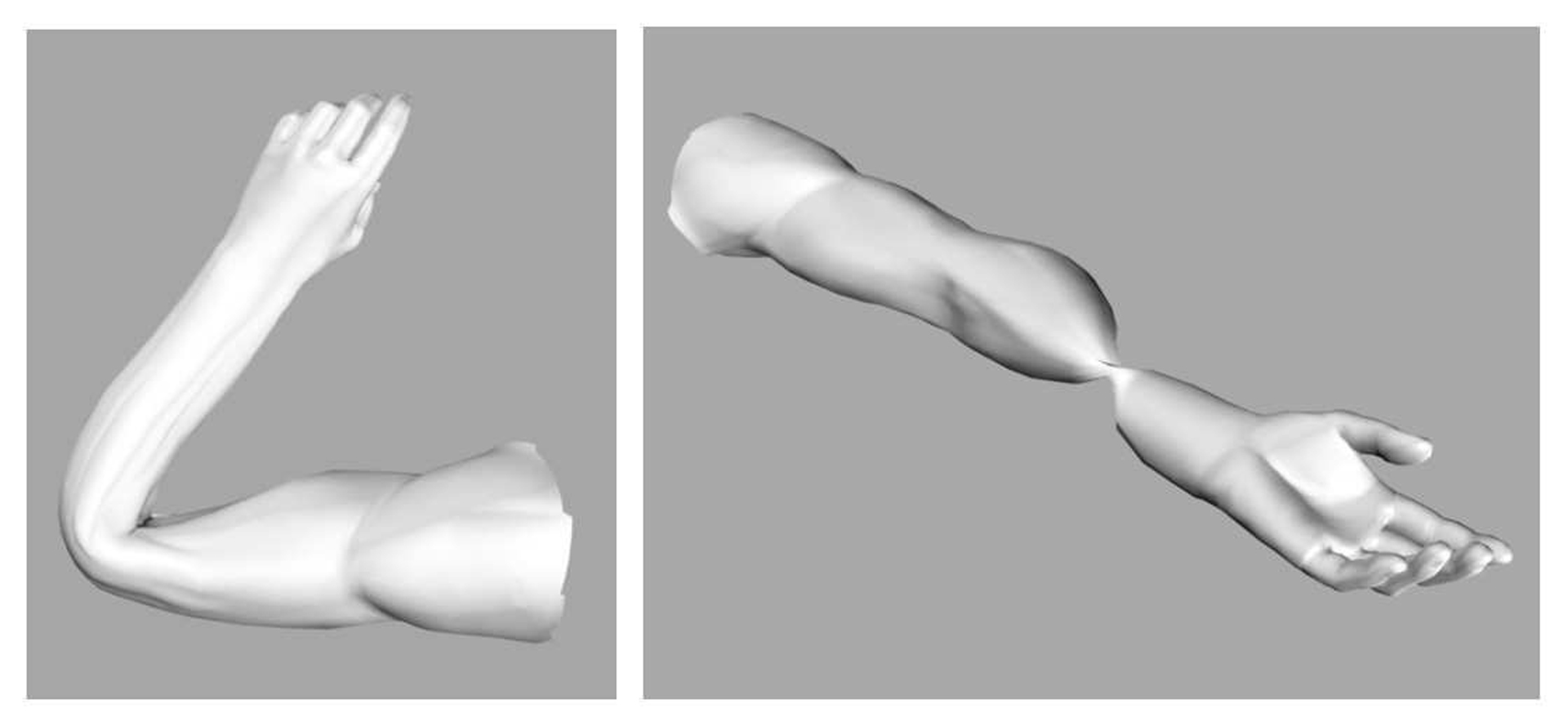“Building efficient, accurate character skins from examples” by Mohr and Gleicher
Conference:
Type(s):
Title:
- Building efficient, accurate character skins from examples
Presenter(s)/Author(s):
Abstract:
Good character animation requires convincing skin deformations including subtleties and details like muscle bulges. Such effects are typically created in commercial animation packages which provide very general and powerful tools. While these systems are convenient and flexible for artists, the generality often leads to characters that are slow to compute or that require a substantial amount of memory and thus cannot be used in interactive systems. Instead, interactive systems restrict artists to a specific character deformation model which is fast and memory efficient but is notoriously difficult to author and can suffer from many deformation artifacts. This paper presents an automated framework that allows character artists to use the full complement of tools in high-end systems to create characters for interactive systems. Our method starts with an arbitrarily rigged character in an animation system. A set of examples is exported, consisting of skeleton configurations paired with the deformed geometry as static meshes. Using these examples, we fit the parameters of a deformation model that best approximates the original data yet remains fast to compute and compact in memory.
References:
1. ALLEN, B., CURLESS, B., AND POPOVIĆ, Z. 2002. Articulated body deformation from range scan data. ACM Transactions on Graphics 21, 3 (July), 612–619. Google ScholarDigital Library
2. BURTNYK, N., AND WEIN, M. 1976. Interactive skeleton techniques for enhancing motion dynamics in key frame animation. CACM 19, 10, 564–569. Google ScholarDigital Library
3. CAPELL, S., GREEN, S., CURLESS, B., DUCHAMP, T., AND POPOVIĆ, Z. 2002. Interactive skeleton-driven dynamic deformations. ACM Transactions on Graphics 21, 3, 586–593. Google ScholarDigital Library
4. CATMULL, E. E. 1972. A system for computer generated movies. In Proc. ACM Annual Conf. August, 422–431. Google Scholar
5. FREEMAN, W. T., AND TENENBAUM, J. B. 1997. Learning bilinear models for two-factor problems in vision. In IEEE Computer Vision and Pattern Recognition. Google Scholar
6. JAMES, D. L., AND PAI, D. K. 2002. DyRT: Dynamic response textures for real time deformation simulation with graphics hardware. ACM Transactions on Graphics 21, 3, 582–585. Google ScholarDigital Library
7. KRY, P. G., JAMES, D. L., AND PAI, D. K. 2002. Eigenskin: Real time large deformation character skinning in hardware. In ACM SIGGRAPH Symposium on Computer Animation, 153–160. Google Scholar
8. LEWIS, J. P., CORDNER, M., AND FONG, N. 2000. Pose space deformations: A unified approach to shape interpolation and skeleton-driven deformation. In Proceedings of ACM SIGGRAPH 2000, Annual Conference Series, ACM SIGGRAPH. Google ScholarDigital Library
9. MAGNENAT-THALMANN, N., LAPERRIRE, R., AND THALMANN, D. 1988. Joint-dependent local deformations for hand animation and object grasping. In Proceedings of Graphics Interface ’88, 26–33. Google Scholar
10. MALANDAIN, G., AND BOISSONNAT, J.-D. 2002. Computing the diameter of a point set. In Discrete Geometry for Computer Imagery (DGCI 2002), A. Braquelaire, J.-O. Lachaud, and A. Vialard, Eds., vol. 2301. Google ScholarDigital Library
11. NEBEL, J.-C., AND SIBIRYAKOV, A. 2002. Range flow from stereo-temporal matching: application to skinning. In IASTED International Conference on Visualization, Imaging, and Image Processing.Google Scholar
12. SCHEEPERS, F., PARENT, R. E., CARLSON, W. E., AND MAY, S. F. 1997. Anatomy-based modeling of the human musculature. In Proceedings of SIGGRAPH 97, Annual Conference Series, ACM SIGGRAPH, 163–172. Google Scholar
13. SEDERBERG, T. W., AND PARRY, S. R. 1986. Free-form deformation of solid geometric models. In Proceedings of SIGGRAPH 86, Annual Conference Series, ACM SIGGRAPH, 151–160. Google Scholar
14. SHOEMAKE, K. 1985. Animating rotation with quaternion curves. In Proceedings of SIGGRAPH 85, Annual Conference Series, ACM SIGGRAPH, 245–254. Google Scholar
15. SINGH, K., AND FIUME, E. L. 1998. Wires: A geometric deformation technique. In Proceedings of SIGGRAPH 98, Annual Conference Series, ACM SIGGRAPH, 405–414. Google Scholar
16. SLOAN, P.-P. J., CHARLES F. ROSE, I., AND COHEN, M. F. 2001. Shape by example. In Proceedings of the 2001 symposium on Interactive 3D graphics, 135–143. Google Scholar
17. TURKOWSKI, K. 1990. Transformations of surface normal vectors. Tech. Rep. 22, Apple Computer, July.Google Scholar
18. WANG, X. C., AND PHILLIPS, C. 2002. Multi-weight enveloping: Least-squares approximation techniques for skin animation. In ACM SIGGRAPH Symposium on Computer Animation, 129–138. Google Scholar
19. WILHELMS, J., AND GELDER, A. V. 1997. Anatomically based modeling. In Proceedings of SIGGRAPH 97, Annual Conference Series, ACM SIGGRAPH, 173–180. Google Scholar





